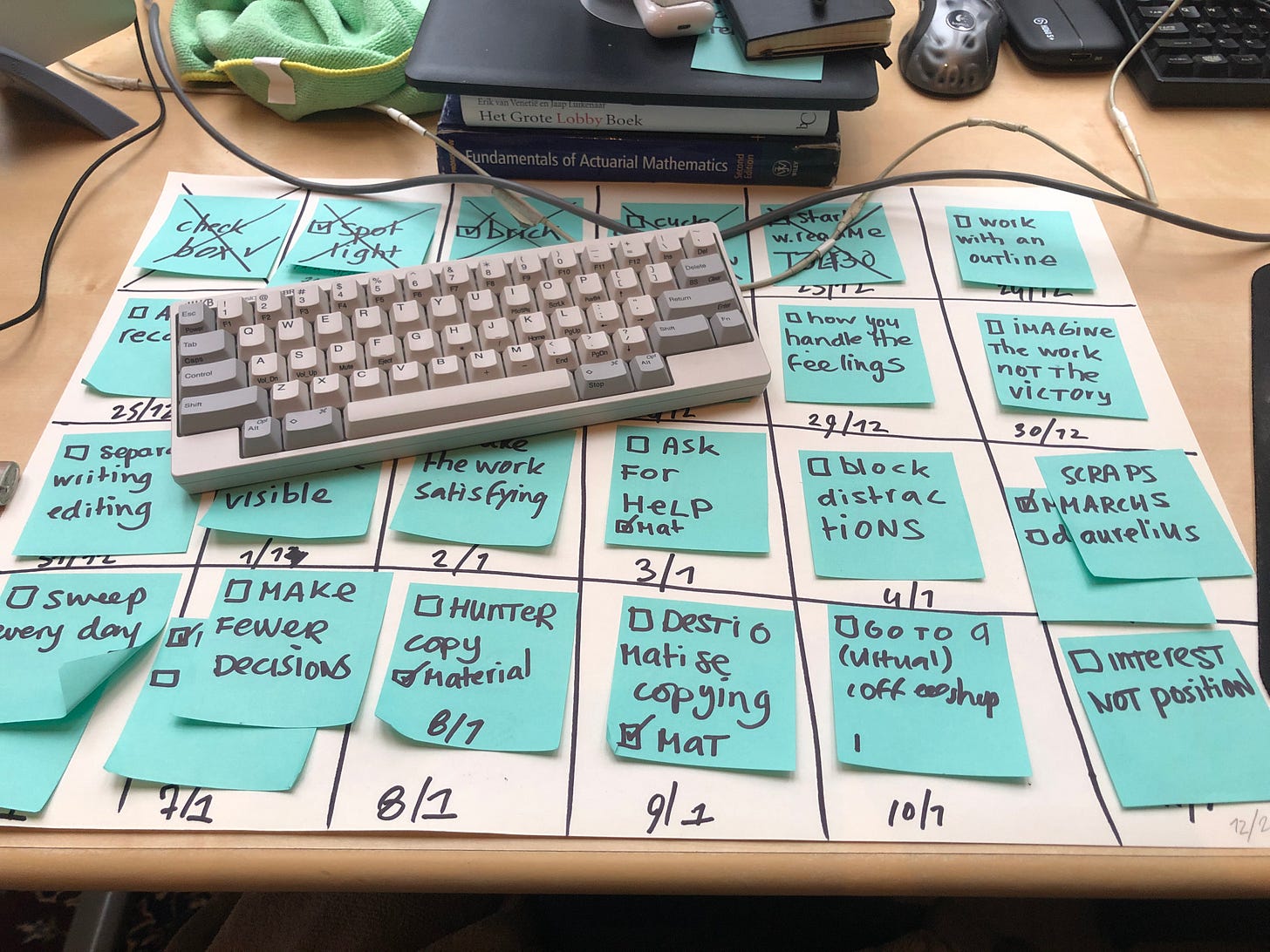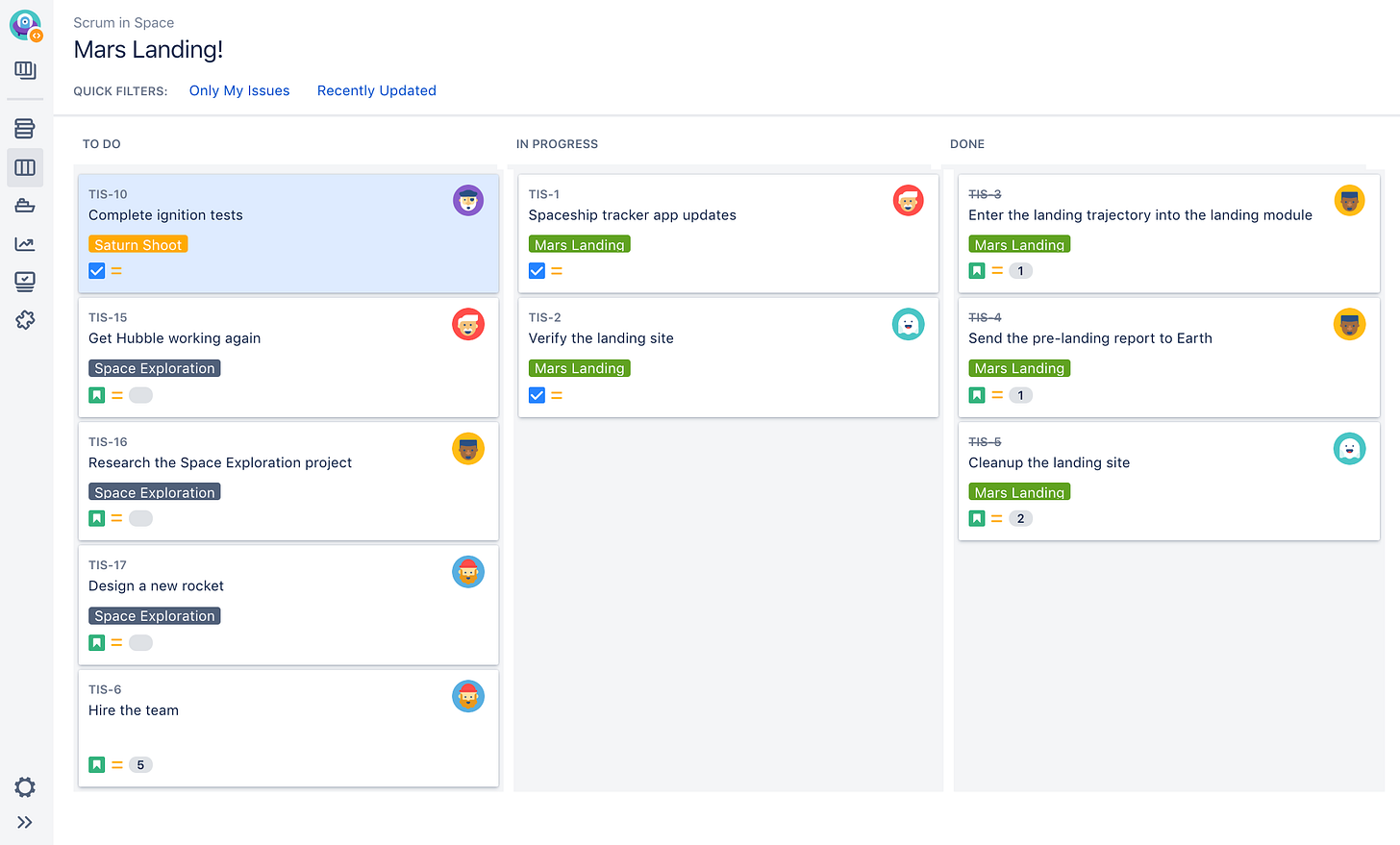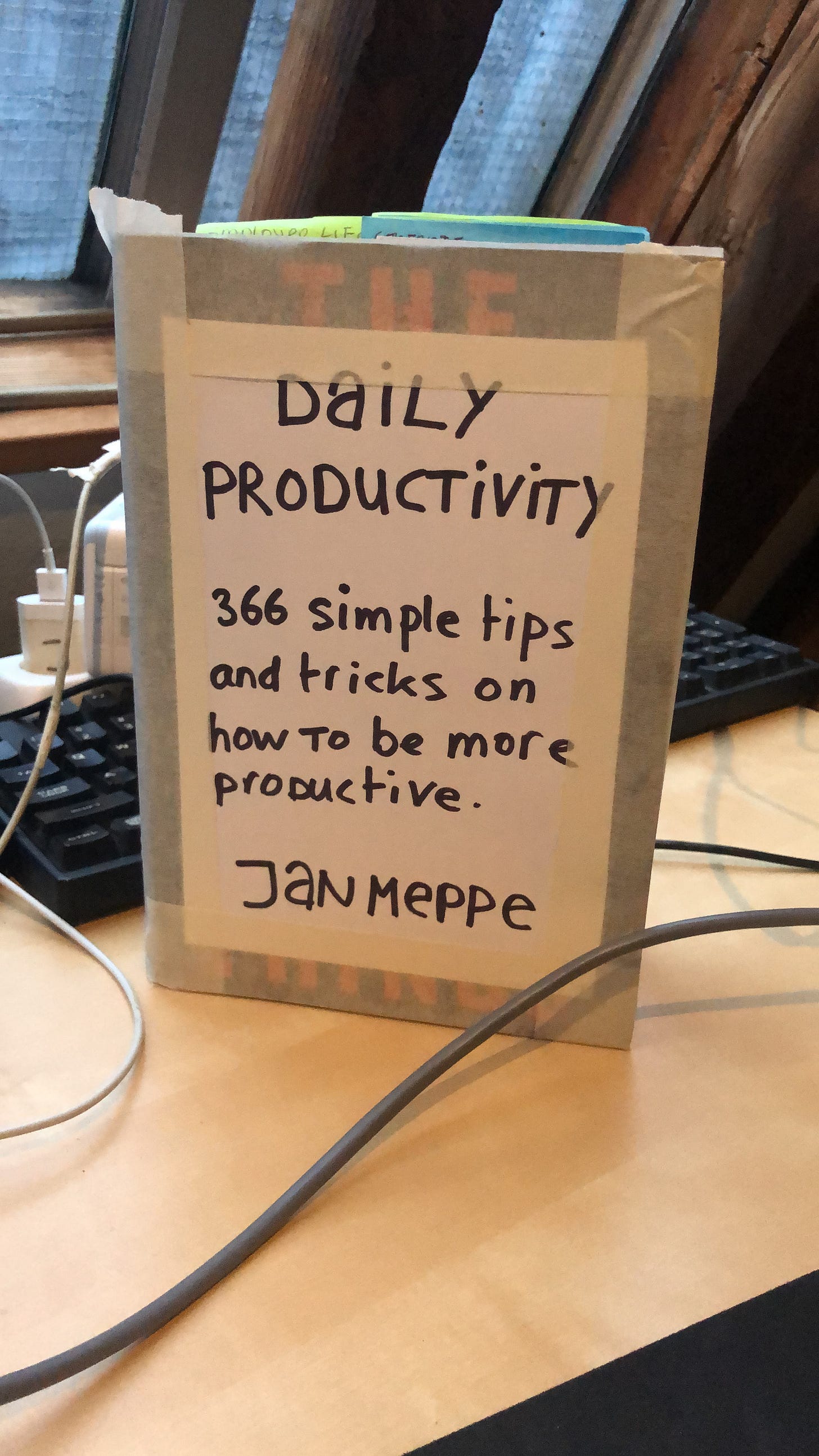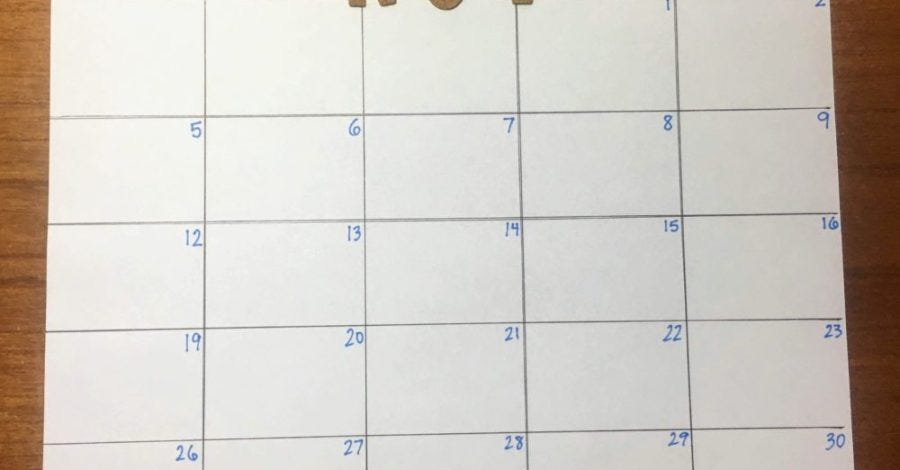Welcome back to Today Jan Learned (TJL) #39. In this newsletter I share tips and tricks to become more productive. I take the best self-help advice and turn it into actionable advice you can apply for immediate results.
Read today’s tip down below! 👇
Daily Productivity Tip #14
Make it visual.
It is said that our brain can process visual content 60,000 faster than written text. We are biologically wired to process visual stimuli, why not leverage that!?
Let this serve as a daily reminder to make it visual.
Get your hands dirty. Get creative. Get visual.
This is how I make this newsletter visual:
I love to just grab a big sheet of paper, some sticky notes, and just go to town on it. No need to get fancy, just make it visual.
Making it visual works because it makes the work tangible, it shows your progress, and physically crossing things off is oh so satisfying.
Make it visual!
That’s today’s tip! Keep reading for more details! 👇
I lied
In the intro I said that your brain can process images 60,000 faster than text. This is probably a lie but I kept in there because I like the figure.
I am also going to experiment a bit with the structure of the second part of this newsletter. I want to write more freely. I feel like you can safely skip over this part of the text if you just apply the tip above, but it might be nice to read for some additional details like: where did I find this tip, how do I use this tip, and how you might use this tip.
The goal of this newsletter
The goal of this newsletter is rather self-serving.
I want to read something that gives me an instant productivity boost every morning at 9:am.
I want to wake up, make my coffee, read this newsletter, and be inspired for the rest of the day.
This does not need to contain high-science or whatever, it just needs to pump me up for the rest of the day or give me a good tip to apply today.
While reading Tools of Titans from Tim Ferris I came across this quote which perfectly describes what I want to create here.
I wanted low-hanging fruit with immediate returns. Think of the bite-sized rules within these pages as PEDs—performance-enhancing details. They can be added to any training regimen (read here: different careers, personal preferences, unique responsibilities, etc.) to pour gasoline on the fire of progress
Where did I get today’s lesson from?
Today’s lesson is from the book Essential Kanban Condensed. The book is a guide on Kanban which is a way to manage knowledge work.
Kanban?
If you’ve ever worked with JIRA boards, tickets, swimlanes, SCRUM, or agile, then you have already worked with a Kanban system.
Simply put, a Kanban system is a way to manage knowledge work. This is usually done with visual signals (sticky notes or tickets) and different stages of the work.
This JIRA board is an example of a Kanban system. It has different stages of work (todo, in progress, done) and it uses visual signals (tickets).
Make the invisible visible
Knowledge work is a tricky task because many tasks are intangible. They often don’t have a real physical counterpart to them. Kanban tries to fix this. One of the core principles of Kanban is to make it visual.
The Kanban Method is based on making visible what is otherwise intangible knowledge work, to ensure that the service works on the right amount of work—work that is requested and needed by the customer and that the service has the capability to deliver.
The act of making work and policies visible—whether on a wall board, in electronic displays, or other means—is the result of an important journey of collaboration to understand the current system and find potential areas for improvement.
I personally found that making the work visual, whether it is through a sticky note or something else, works wonders for my productivity.
As much as I like digital tools there is this intellectual itch that gets scratched in my brain when I scratch something off in real life.
How I use this tip
For big projects I always try to have a visual representation of the work. Sometimes this takes the form of a hand-drawn calendar, other times it takes the form of a sheet of paper with some post it notes.
Sometimes… it looks like this (I feel like an idiot or sharing this):
A big benefit of this is that visual triggers, for me at least, serve as constant reminders to work on the project.
Another benefit of making it visual is that you have a better idea how to tackle it. When you put it down on paper or in any other visual medium, you can more easily break it down in pieces and make it more approachable.
Don’t just take my word for it, listen to these bastards! This advice of getting visual (and physical) is repeated on Austin Keon’s book, Steal Like an Artist, and also in Adam Savage’s book, Every Tool’s a Hammer.
It doesn’t really matter what you do, just get visual!
How you can use this tip
I think the simplest and most obvious way to get started is by making hand-drawn calendars. It sounds stupid and silly, I know, but for some reason it just works.
This is an example of a hand-drawn calendar that I lifted from the internet somewhere. Just grab a sheet of paper, draw some lines, and there you go!
Write the deadline of your exam or big project on this calendar, and hang it somewhere you see it often.
The purpose of this is two-fold: First, you have an instant reminder to work on your project every time you see the calendar. Second, you can viscerally feel the days you have left, grounding you in reality, boosting your motivation.
In other words, make it visual!
Thank you for reading!
That was today’s issue of the Daily productivity Newsletter 🚀
Daily Productivity is a newsletter in which I share practical and effective tips on how to become more productive.
I collect these tips from the best self-help books, podcasts, videos, and turn them into immediately actionable tips for you to apply to your own life!
If you want to tag along for the journey, feel free to subscribe here!
As always, you can find me on my website janmeppe.com or on Twitter at @janmeppe.
Previous TJLs
Read my previous TJLs by following on the links down below:
TJL #6: How to remember the difference between margin and padding
TJL #7: According to Jeff Bezos there are two types of failure
TJL #27: Be aware of the spotlight effect (Daily productivity #2)
TJL #28: Start with the upper-left hand brick (Daily Productivity #3)
TJL #30: Start with writing your README (Daily productivity #5)
TJL #35: Use the Pomodoro technique (Daily productivity #10)
TJL #36: How to handle your negative feelings (Daily productivity #11)
TJL #37: Imagine the work, not the reward (Daily productivity #12)
TJL #38: Separate your writing from editing (Daily productivity #13)




